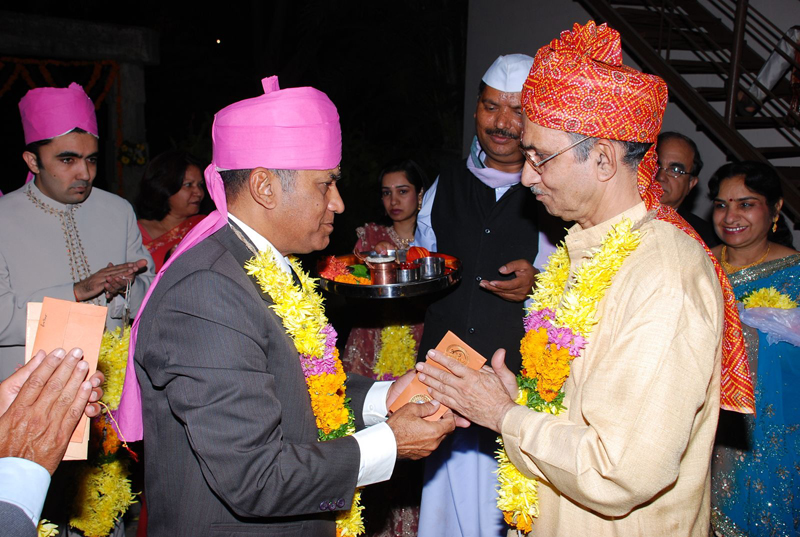South Asian weddings are traditionally just as much about celebrating the unification of two families for the rest of their lives as they are about showering the happy couple with love and attention. And oftentimes, it’s the seemingly briefest moments that carry the most meaning. This couldn’t be truer than when it comes to the Milni ceremony of an Indian wedding.
Both the Milni Indian wedding and Milni Punjabi wedding customs call for the bride’s family to welcome the groom’s family with garlands and gifts after the arrival of the baraat. This meeting is quick yet impactful and also provides a way for wedding guests to see how all the various family remembers are related to the bride and groom.
First, a designated Sikh (or Hindu) priest will say a prayer and then formally introduce the family members. In descending order beginning with the oldest members in each family, the men from the bride’s side of the family welcome the men from the groom’s side and they exchange symbolic Milni garlands made out of flowers.
The ceremony may begin with the eldest grandparents and then move on to the highlight, the fathers; or the fathers themselves may kick things off. From there, uncles are introduced then brothers and so on. Because both the bride and groom’s families may not be perfectly balanced, cousins and other male relatives can fill in as needed.
It has become a fun custom for many families for the men to hug one another and then try to pick the other one up, leaving everyone tickled and even more joyful over the union.
The bride’s side may also present the groom’s family with Milni ceremony gifts in the form of cash, clothes, or jewelry. If the bride and groom expect a lot of people at the baarat, they should consider using a small stage (riser) for the Milni so that everyone has an opportunity to see the families embrace one another and exchange garlands. Milni ceremony songs can be performed by your baraat musicians or DJ and afterward, the groom and his party are served tea and breakfast

The Milni and tea represent a real-world joining of two families in an unbreakable bond. It is also a symbolic way to honor all the male relatives in the bride and groom’s families and essentially acknowledge the proverbial consent of the fathers to let their children get married. At most weddings, the Milni will take place around the same venue as the wedding and roughly 1 to 2 hours prior to the blissful union ceremony itself.
No comments yet.
Please, sign in to leave a comment.